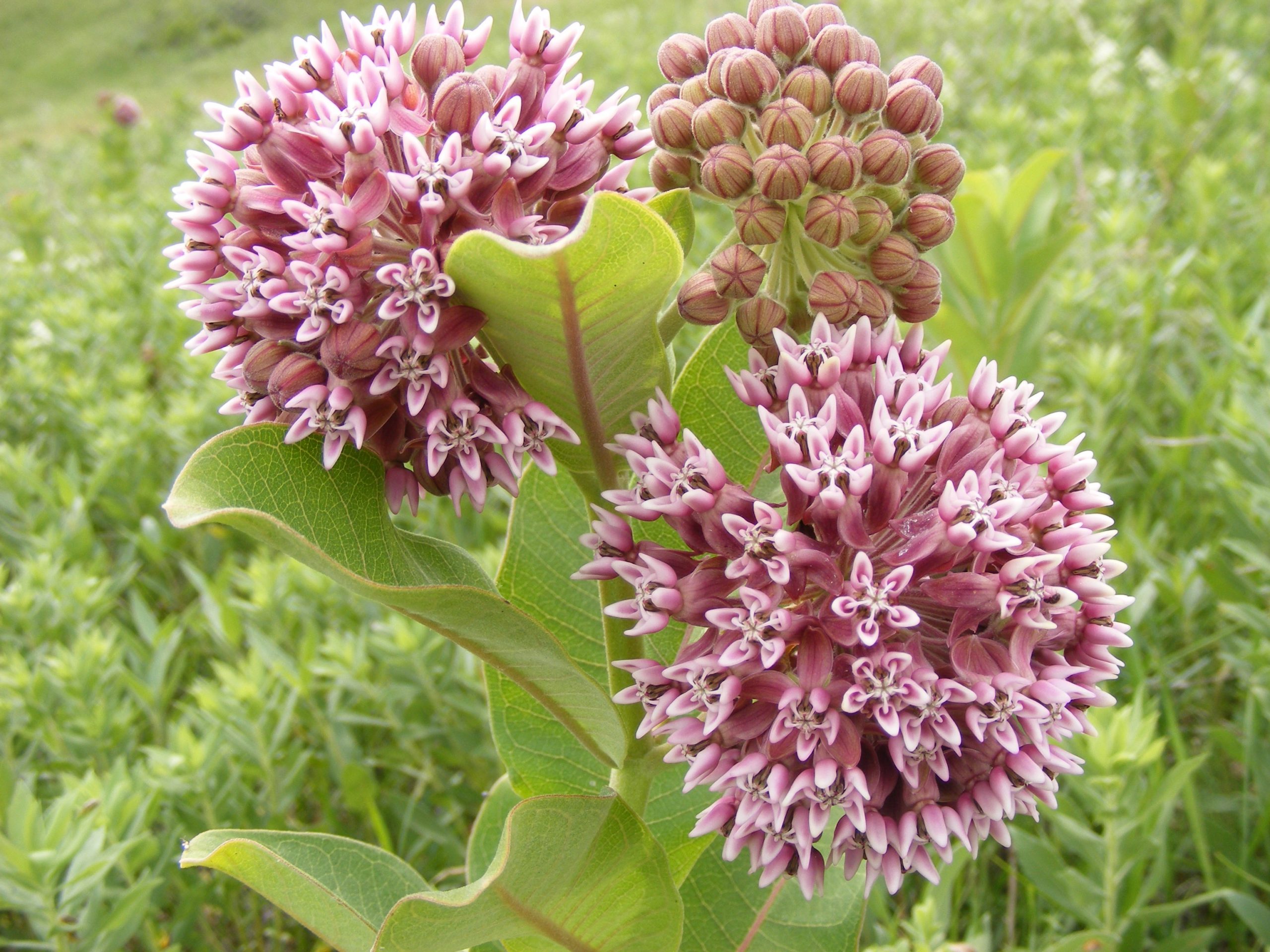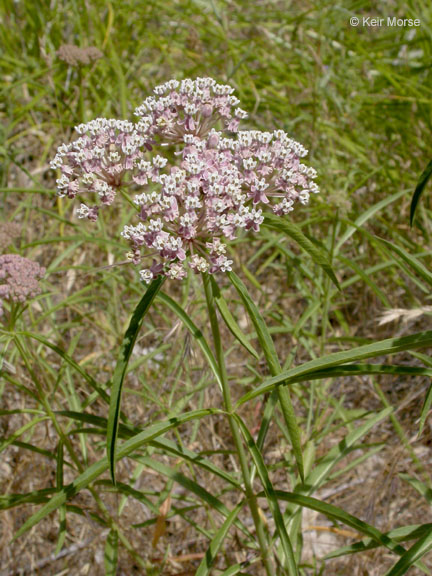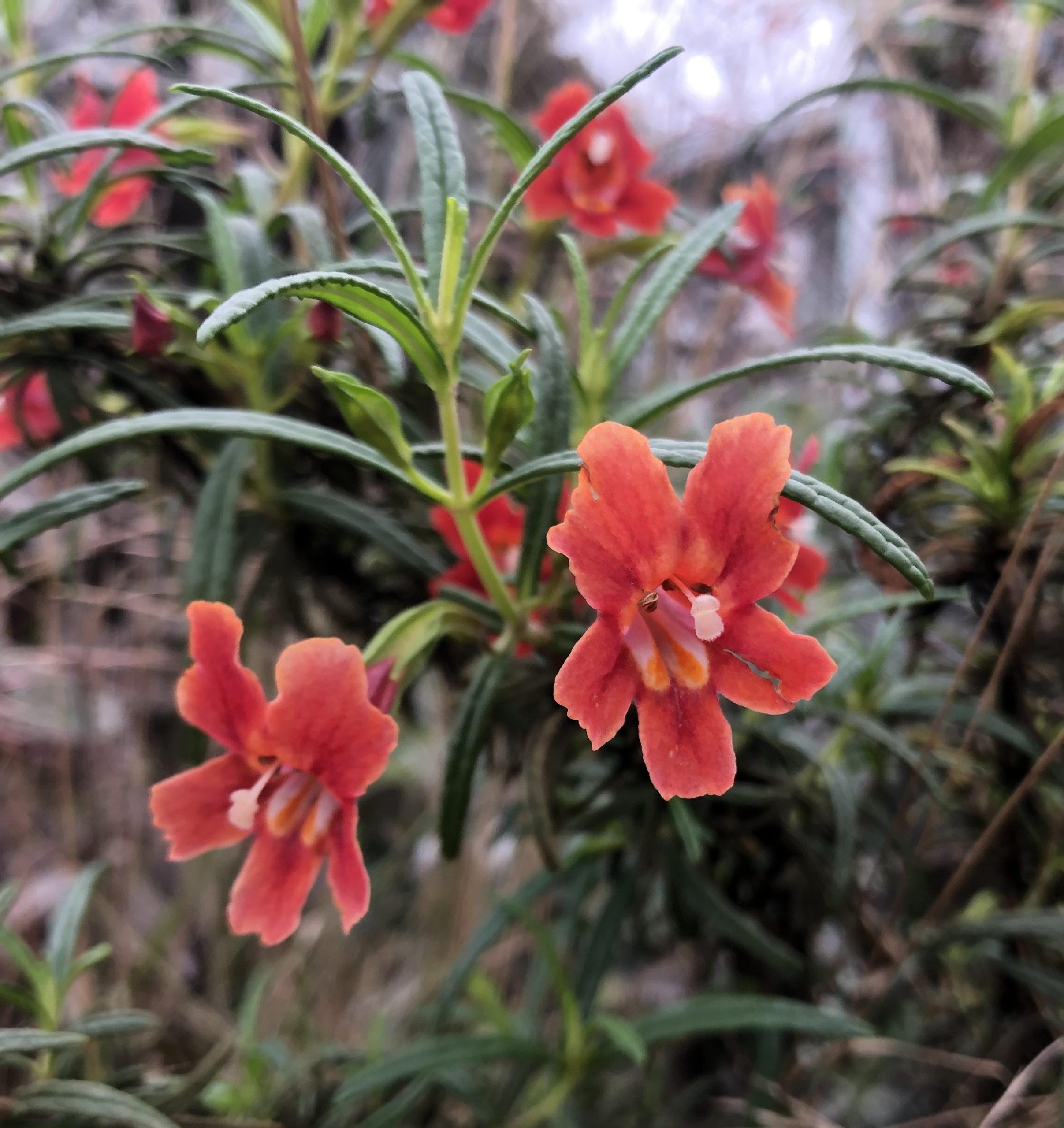How native is that native?
Monarch butterflies are perhaps the most well-known butterflies in North America, with their eye-catching orange and black patterning and huge swarms that strike a chord in the public’s imagination. Millions of butterflies migrate each year to winter in warm areas of the U.S., including California and Baja California. Their numbers have been declining drastically, however. The Xerces Society reported a 97% decline in butterflies from the 1980s to the 2010s. This report spurred gardeners across the country into action, eager to help the butterfly by making up for lost habitat and planting caterpillar food – milkweed – in their gardens.
Unfortunately, the local nurseries only had tropical milkweed (Asclepias curassavica) to offer. While the caterpillars ate it up, the impact on the butterflies was not positive. The tropical milkweed doesn’t die back, offering a breeding ground year-round for monarchs (who then may not migrate) as well as for parasites of the butterfly. The tropical milkweed plantings were actually leading to parasitic infections in adult butterflies and potentially leading to further decline. The simple solution would be to provide native milkweed for gardeners, yet it turns out to be not so simple. One has to ask, how native is native?
Is it native if it occurs in your region, state, county, or within a 20-mile radius, or if it would likely thrive in local conditions? Wikipedia sums up what many native plant websites describe: “Native plants are plants indigenous to a given area in geologic time. This includes plants that have developed, occur naturally or existed for many years in an area.” While helpful, this definition does not address issues that may arise when plant species occur across a wide range or are native to a general area but have specific habitats. Populations of a species that occur across a wide area may have adapted to specific local conditions and may not thrive if planted in other areas, even those within the species range.
I have been working on a project in Southern California to plant natives that will assist the recovery of the struggling Western Monarch population. The obvious solution is to plant native milkweed (Asclepias) species, which provide food for caterpillars, in addition to native nectar sources. California botanists have identified 16 distinct species of milkweed native to the state, six of which occur in San Diego County, the site of my project. Of these six species, five are predominantly found in the desert or mountain habitats of the county, while only one ranges from the coast to the mountains –where most of the people hoping to promote monarchs live.

-

Narrow-leaf milkweed (Asclepias fascicularis) looks quite different in foliage from its common cousin. Though naturally ranging throughout southern California, it is also found further north. Seed sourced from northern populations may not be suitable. Photo credit: © 2008 Keir Morse. -

In addition to milkweed, native plants that provide nectar, will also be important to conserving monarchs. For San Diego County, this could include various species of California lilacs (Ceanothus spp.). -

In addition to milkweed, native plants that provide nectar, will also be important to conserving monarchs. For San Diego County, this could also include various species of monkeyflower (Diplacus aurantiacus).
The coastal species, California narrowleaf milkweed (A. fascicularis), occurs across much of the state. It is also fairly easy to find in nurseries seasonally. However, as I started speaking with local nursery owners and managers, I found that the source of their stock is seed from northern California. These plants may not be ideally suited to environmental conditions in coastal southern California. Casual observation indicates that these plants go into dormancy later than expected for the species, often do not flower, and may not persist in the landscape beyond a year or two. Finding specimens grown from a local source is very difficult at this time, although a number of organizations and government agencies have begun to develop programs to change this.
To maximize the benefits of a native plant garden, care should be taken in selecting plant species. While it is encouraging and exciting to see an increase in native plant availability in nurseries, gardeners should look for species that are truly adapted to the local conditions. Precipitation patterns and totals, soils, and temperature ranges are all factors to consider. I have found species in my local nurseries that will not thrive in my garden, but are ideal for one further inland. I have also found species that are far out of their native range and probably will not thrive. Have I tried some of these species anyway? Absolutely, but with mixed success. Why have I tried them? In some cases because it is rare and I want to do my bit to help preserve the species even if it is ex situ, but usually it’s due to plant lust! New plant species are just so cool!
As I learn more about plant-animal interactions and co-dependence, I recognize that creating a thriving local habitat requires me to look for plants that are truly native and would occur naturally in my area. While many pollinators do not limit their foraging to a particular species or even to native plants in general, others visit only a single plant species. For example, many native bees gather pollen from one plant species, and no other pollen will meet their nutritional needs. Even for generalist pollinators, one cannot be certain that plants not native to the local area are meeting their nutritional needs. The same is true for herbivores, such as caterpillars.
Providing the plants species that have coevolved with local pollinators and herbivores best supports maintaining a food web and biodiversity within an area.
In summary, planting a native plant garden is always a worthwhile endeavor, but the best results are achieved when care is taken to select species appropriate for the area.
The U.S. Fish and Wildlife Service with the Xerces Society and other partners is taking a lead in promoting native milkweed plantings to support monarch butterflies. San Diego Zoo Global is working with CPC locally to promote the use of appropriate plants within San Diego County. Currently, Lesley and others at the San Diego Zoo and CPC have presented to the City of Solana Beach’s Climate Action Commission. The commission is seeking ways to maintain healthy habitats in the face of climate change and seeking advice on plantings, including those that would aid monarchs, in their open spaces, medians, and right-a-ways.
In the future, the program may expand to be more active in increasing demand for local milkweed in both local government and among the public as well as work with local nurseries to ensure the plant material is available.